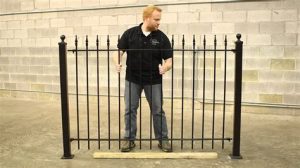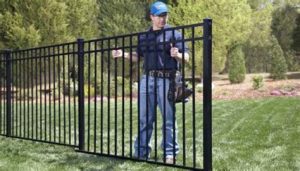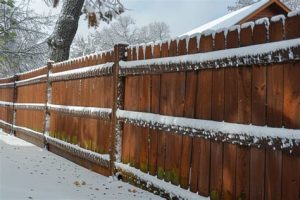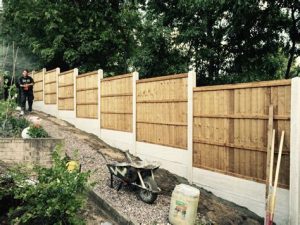Learn effective techniques for fence installation: assess the ground, choose materials, prepare and level your site, and securely install posts.Installing a fence can be a rewarding project that enhances your property’s value and privacy, but when faced with uneven ground, it can quickly become a daunting task. Whether you’re looking to define your boundaries, create a safe space for children and pets, or add an aesthetic appeal to your yard, understanding how to tackle the challenges posed by irregular terrain is crucial. In this blog post, we’ll guide you through essential tips for installing a fence on uneven ground, starting with assessing the area and selecting the right materials. We’ll also cover how to prepare the ground effectively, level the fence panels, and secure the fence posts for long-lasting stability. With these practical insights, you’ll be well on your way to achieving a beautiful and functional fence, even in the trickiest of terrains.
Assessing the Ground
Before embarking on the journey of installing a fence, it’s crucial to assess the ground where it will be placed. This first step can determine the ease or difficulty of the entire project. Begin by walking the perimeter where you intend to install your fence and take note of its topography. Are there steep slopes or sudden dips? Understanding the natural landscape will guide your approach to installation.
Next, check for any potential obstacles such as rocks, roots, or existing structures that may interfere with the fence’s foundation. If you encounter uneven patches, you may want to consider using a leveling tool to measure the variances in height. This will help you decide how to proceed, whether that means digging deeper in some areas or adding fill material in others.
Use a simple measurement chart to record your findings.
| Location | Height (inches) | Notes |
|---|---|---|
| Start Point | 30 | Level ground |
| Mid Point | 25 | Low dip |
| End Point | 35 | Higher elevation |
Collecting this information not only brings clarity to the ground conditions but also assists in selecting the right materials and methods for your fence installation.
Choosing the Right Materials
When it comes to installing a fence on uneven ground, choosing the right materials is crucial. The material you select not only impacts the aesthetics of your property but also the durability and functionality of the fence itself.
- Wood Fencing: A classic choice, wood can be easily cut to fit the contour of the ground. However, it requires regular maintenance to prevent rot.
- Vinyl Fencing: This material is low-maintenance and resistant to fading and cracking. Vinyl fencing can also adapt well to uneven landscapes.
- Metal Fencing: Options like chain link or wrought iron provide strength and security. They can be adjusted more easily for varying elevations.
- Composite Fencing: A blend of wood and plastic, composites offer the best of both worlds. They are resistant to insects and weather while providing an appealing look.
In addition to the above materials, consider the gates and fasteners you will need. Gates must be able to function smoothly on uneven ground, and sturdy fasteners will ensure the fence remains secure over time.
Lastly, don’t forget to factor in your local environment.
Preparing the Ground
Preparing the ground is a vital step when installing a fence, especially on uneven terrain. Proper preparation ensures that your fence will be stable, durable, and visually appealing. Let’s explore the essential steps involved in getting your ground ready for fencing.
Initially, you should clear the area where the fence will be installed. This entails removing any debris, grass, or plants that could interfere with the fence installation process. It’s crucial to make sure the digging area is free of obstacles to allow for a smooth installation.
Next, you may want to consider using a string line to mark the alignment of your fence. Stretching a string tightly from point to point where the fence will be installed helps visualize the line and maintain accuracy as you proceed with digging post holes and securing panels. If your ground is particularly rocky or uneven, taking care to mark out high and low points will assist in leveling later on.
Additionally, assessing drainage is crucial. Look for any water pooling locations or areas that may become muddy or boggy. If necessary, implement drainage solutions or select materials suited to withstand such conditions. This foresight can significantly prolong the life of your fence.
Finally, depending on the soil type, you may need to compact the earth or add gravel to improve stability and manage drainage effectively. Taking these preparatory steps will pave the way for a successful fence installation project.
Leveling the Fence Panels
When installing a fence on uneven ground, leveling the fence panels becomes a critical step that requires careful attention. Proper leveling not only enhances the aesthetic appeal of your fence but also ensures its stability and longevity. Here are some essential tips to help you achieve a perfectly leveled fence on uneven surfaces.
1. Use a Level Tool: One of the simplest methods to achieve level fence panels is to use a level tool. Place a bubble level on each panel as you secure it. This allows you to make adjustments as needed to guarantee that each panel sits evenly, maintaining a uniform height despite the uneven ground.
2. Adjust the Panel Heights: Depending on the degree of slope or unevenness, you may need to adjust the heights of the panels manually. Consider adding additional support or spacing adjustments on one side of the panel. This can also involve cutting or adding to the panel’s length on the lower end as a means of compensating for height differences.
3. Pack the Soil: Before installing the fence panels, make sure to pack the soil underneath any lower sections. This helps create a stable base and prevents the fence from leaning over time. Using a tamper or compacting tool can effectively pack the ground to give you a more level surface to work with.
4. Use String Lines: Another effective technique for leveling your fence panels is setting up a series of string lines. This helps visualize the desired height along the fence line, giving you a guide to adjust your panels accordingly. Remember to check the string line for any sagging before proceeding with the installation to ensure consistency.
By following these tips, you’ll find that leveling fence panels on uneven ground is a manageable task. With patience and proper technique, you can achieve a fence that is not only functional but visually pleasing as well.
Securing the Fence Posts
When installing a fence on uneven ground, securing the fence posts is a crucial step that ensures your fence remains stable and durable over time. Without proper securing, the fence may lean, sag, or even collapse, especially if it encounters harsh weather conditions. Here are some effective techniques to help you properly secure your fence posts.
First, make sure to dig the post holes deep enough. The general rule is to bury at least one-third of the post’s length underground. For uneven terrain, this may require you to adjust the depth of each hole based on the height of the fence in relation to the ground’s slope. Additionally, consider using gravel or sand at the bottom of the holes to promote drainage, which helps prevent rot and ensures stability.
Once the posts are in place, use concrete to secure them. Pouring quick-setting cement around the post and allowing it to set will provide immense strength. Ensure that the posts are aligned vertically using a level before the concrete hardens. For added stability, brace the posts with temporary supports while the concrete cures. This precaution will help maintain the correct position and prevent any unwanted movement.
Remember that adding extra reinforcement can also be beneficial. Using cross-bracing with diagonal supports can help to stabilize the posts further, especially on uneven ground. Lastly, regularly check your fence for any signs of leaning or instability, and take immediate action if any issues arise to ensure your fence remains secure and effective.
Frequently Asked Questions
What are some challenges of installing a fence on uneven ground?
Uneven ground can create difficulties in ensuring that fence panels are level, securing posts firmly, and preventing gaps or misalignment between sections.
What tools are necessary for installing a fence on uneven terrain?
You will need tools such as a post hole digger, level, measuring tape, string line, shovel, and possibly a power saw for adjustments.
Should I use specific types of fence materials for uneven ground?
Yes, flexible materials like chain link or wood panels that can be adjusted on site may perform better on uneven terrain, whereas rigid panels may require additional bracing.
How can I ensure my fence remains stable on uneven ground?
To ensure stability, consider setting posts deeper in the ground, using concrete for added support, and selecting a fence design that accommodates terrain changes.
Is it necessary to level the ground before installing a fence?
While it’s not always necessary to completely level the ground, making adjustments to high spots and filling in low areas can help create a more stable foundation for the fence.
What techniques can I use to make installation easier on slopes?
Techniques like terrace fencing, racking sections of the fence to follow the slope, or using stepped panels can help in adapting the fence to the slope.
How can I maintain my fence once it’s installed on uneven ground?
Regularly check for stability, ensure there are no shifting posts due to soil erosion, and keep an eye on gaps that may appear as the ground settles.





